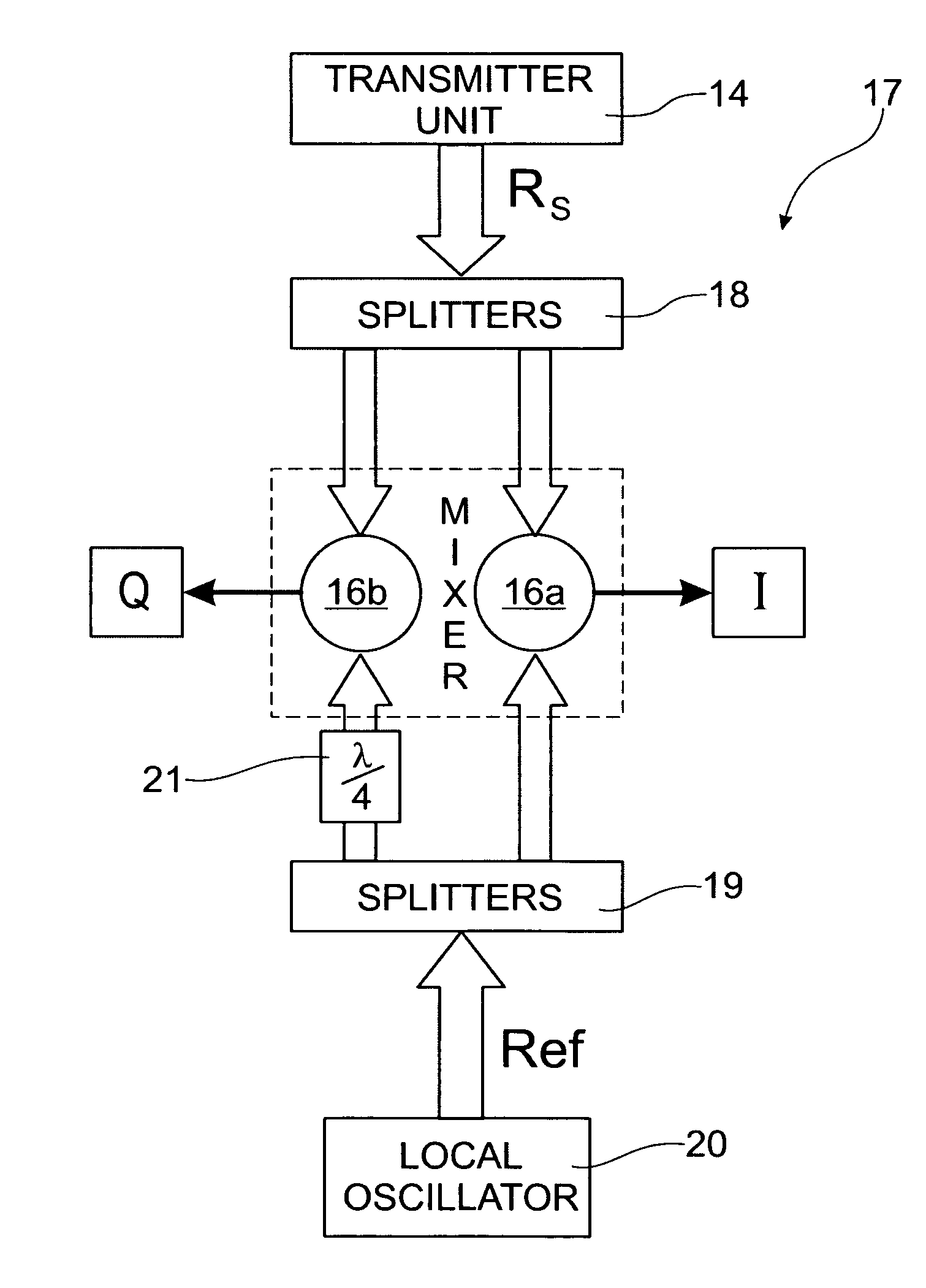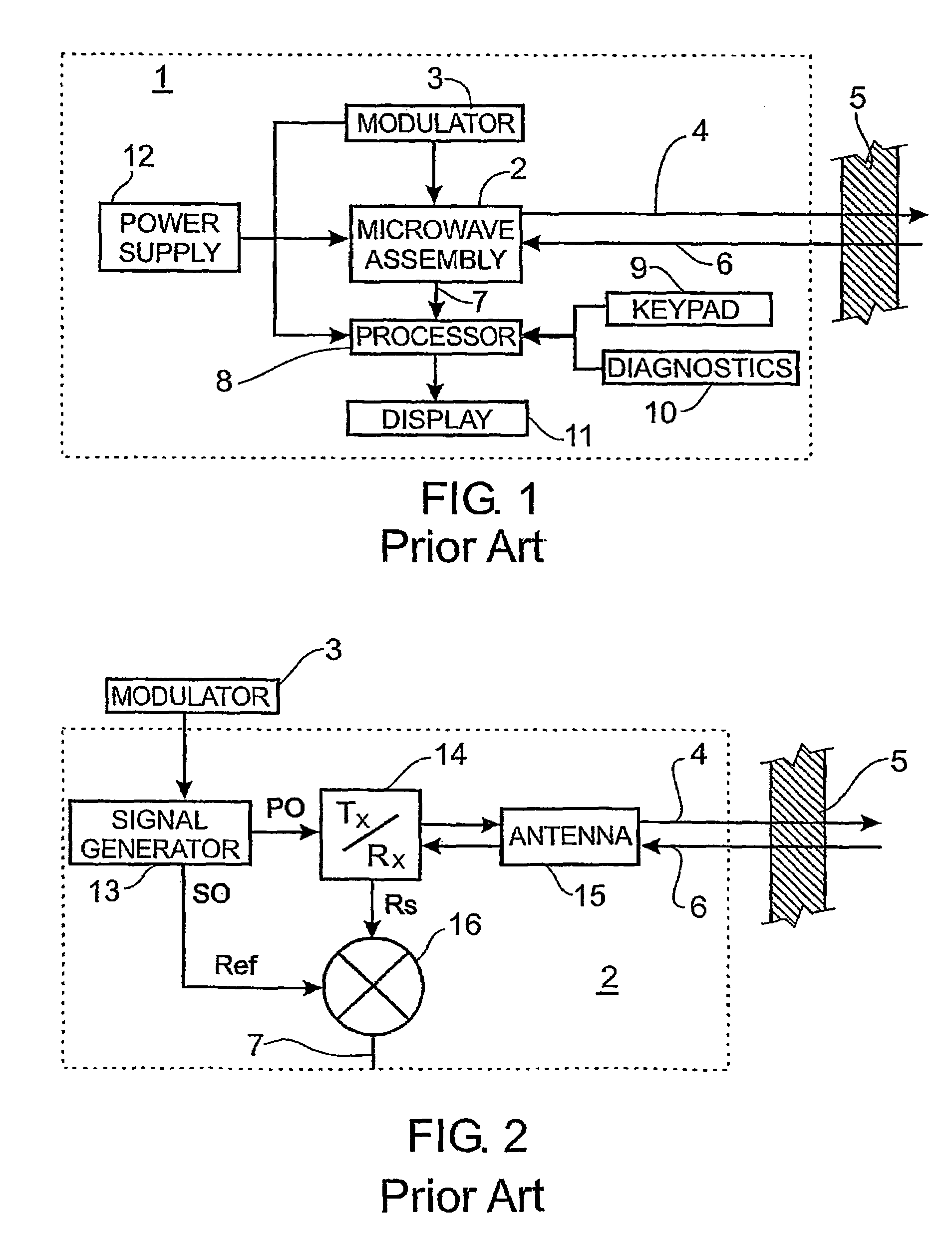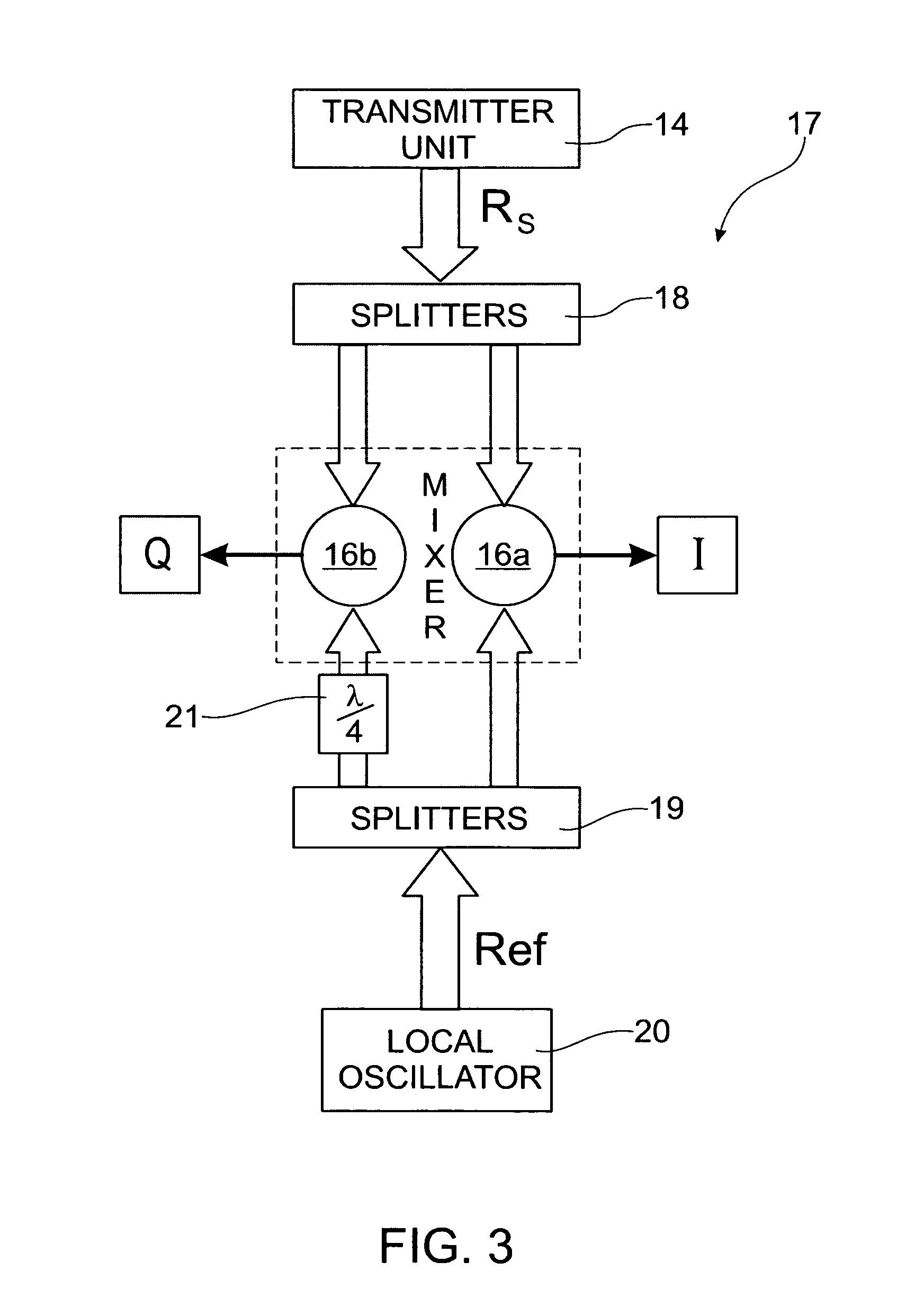Near-field antenna array with signal processing
a near-field antenna and signal processing technology, applied in the direction of using reradiation, radio wave reradiation/reflection, measurement devices, etc., can solve the problems of poor phase control and magnitude control, inability to determine the number, species and activity of insects, and high cost and difficulty
- Summary
- Abstract
- Description
- Claims
- Application Information
AI Technical Summary
Benefits of technology
Problems solved by technology
Method used
Image
Examples
Embodiment Construction
[0028]In a preferred form, the invention will be described with reference to a smart antenna as may be used in a system for detecting the presence of pests, namely termites, in a structure using microwave signals. However, it should be noted that the invention can also be used in other applications requiring smart antennas. Furthermore, the description emphasises the application to near-field antenna patterns but the invention is not limited to this specific situation.
[0029]The applicant's prior Australian patent, AU 693039 describes a system for detecting the presence of insects in a structure using microwave signals, which description is incorporated herein by reference. The present invention will be described briefly with reference to that system.
[0030]Referring to FIG. 1, there is shown a block diagram of a system 1 for detecting insects, such as termites as described in AU 693039. The system 1 comprises a microwave assembly 2 that transmits a continuous wave (or pulsed) microwa...
PUM
 Login to View More
Login to View More Abstract
Description
Claims
Application Information
 Login to View More
Login to View More - R&D
- Intellectual Property
- Life Sciences
- Materials
- Tech Scout
- Unparalleled Data Quality
- Higher Quality Content
- 60% Fewer Hallucinations
Browse by: Latest US Patents, China's latest patents, Technical Efficacy Thesaurus, Application Domain, Technology Topic, Popular Technical Reports.
© 2025 PatSnap. All rights reserved.Legal|Privacy policy|Modern Slavery Act Transparency Statement|Sitemap|About US| Contact US: help@patsnap.com



